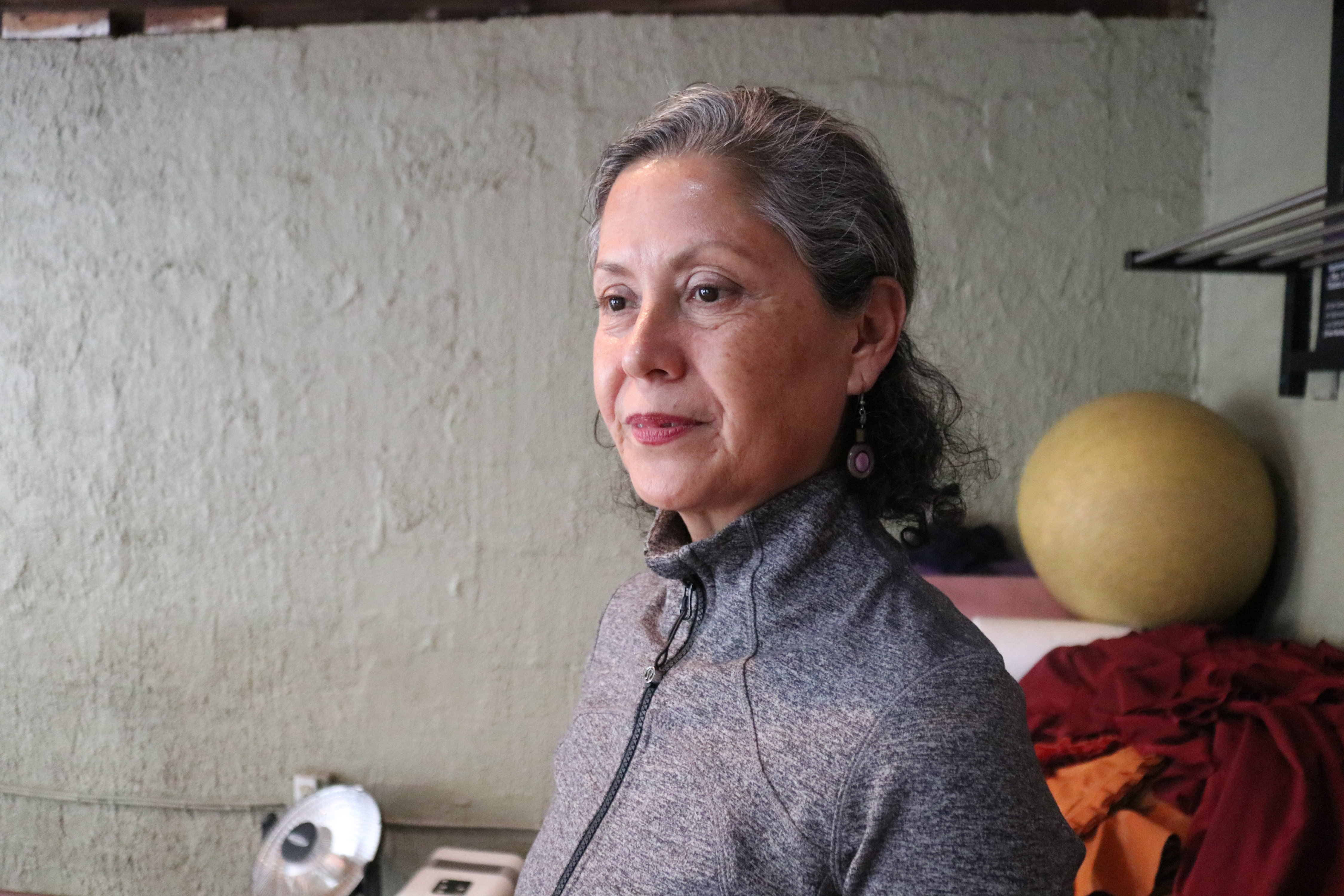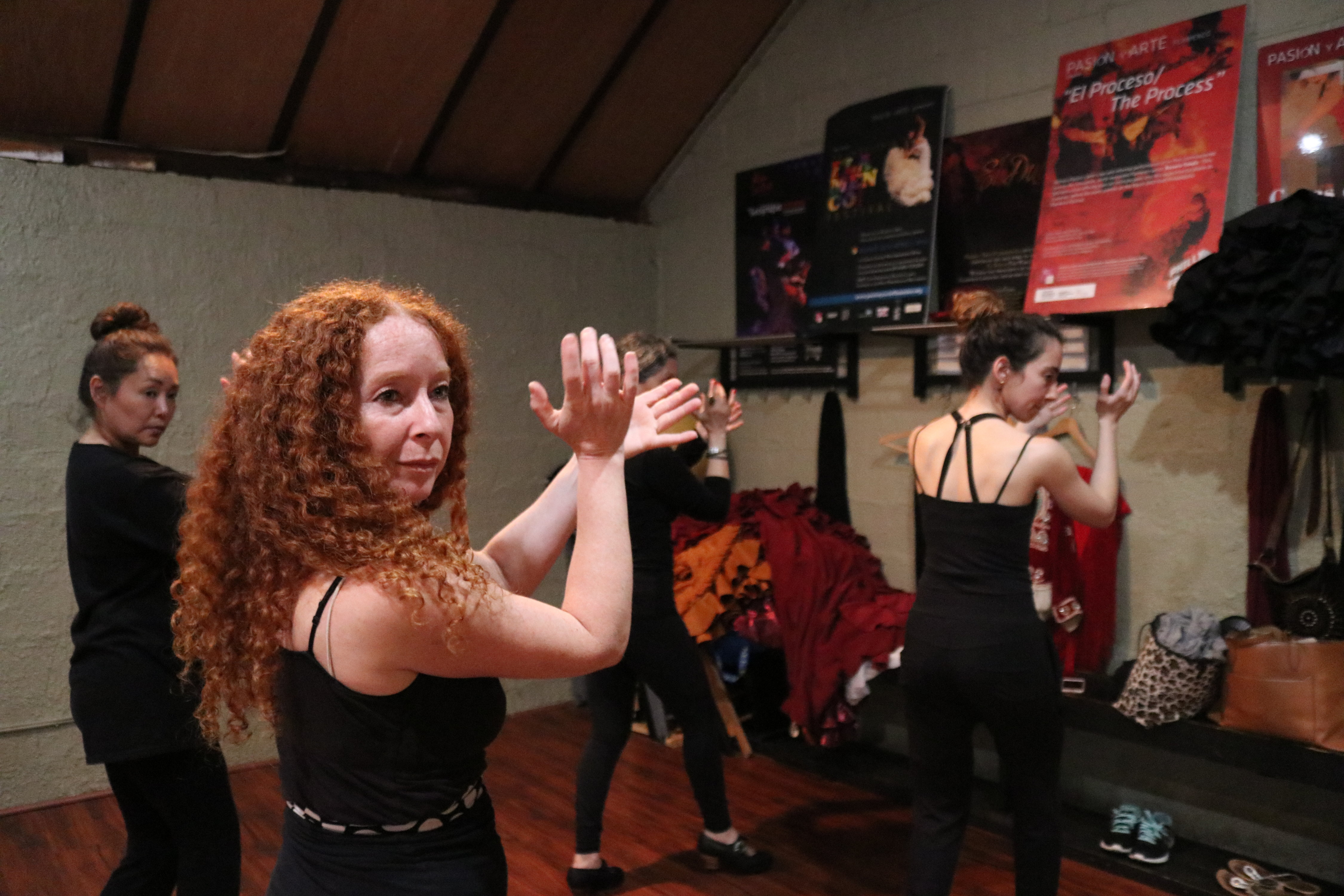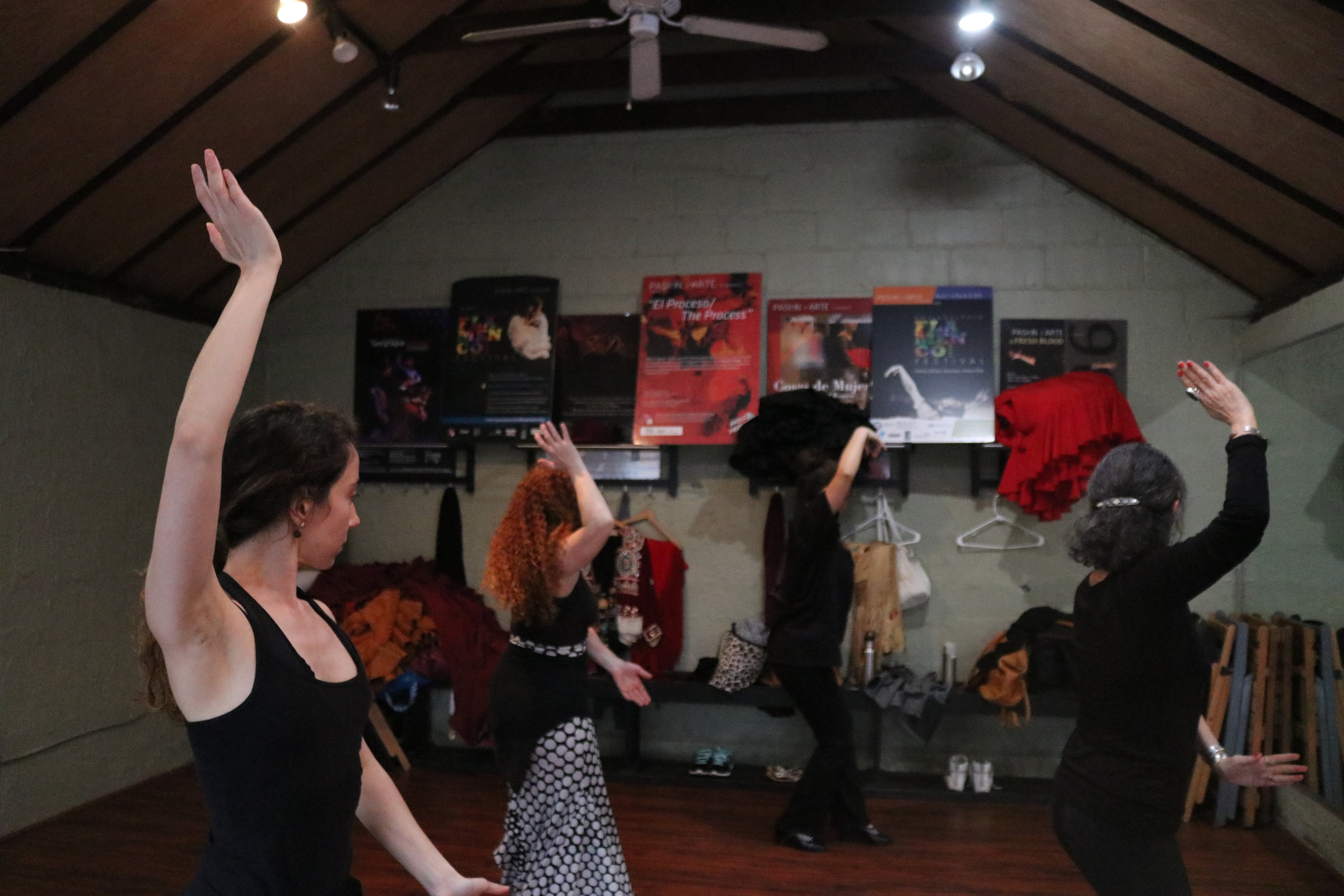
Flamenco artist and teacher Elba Hevia y Vaca amplifies women’s voices in Philadelphia
Through her all-female flamenco dance company and her own choreography and performances, including most recently “La Bolivianita,” Hevia y Vaca embraces the…
Even while sitting comfortably on the wooden floor of her garage studio in Overbrook, Philadelphia, preparing for rehearsal with the dancers of Pasión y Arte, the all-female flamenco dance company of which she is both founder and director, Elba Hevia y Vaca talks as if she’s dancing. Her hand movements elaborate and punctuate her sentences with the same precise force that they express through the movements of flamenco while she is onstage, and at times it seems the strength of her emotion or thought overflows the mere words and voice, and must seek its expression in her entire body, with a graceful move forward or a firm hand up for emphasis.
It is fitting that her artistry imbues every aspect of even her most mundane expressions - flamenco is, after all, the love of her life, Hevia y Vaca said.
The artist, dancer, choreographer, teacher, and entrepreneur is able to inhabit many roles at once, a gift that flamenco has given her and so many others, she said: knowing how to feel and express all of one’s emotions simultaneously, to “be many things at once.”

But her journey from growing up in the capital city of La Paz, Bolivia, to founding and leading Pasión y Arte, an all-female dance company in Philadelphia, Pennsylvania, has been anything but straightforward.
Hevia y Vaca’s shaping of her career and devotion to her art form has been filled with the full range of emotions and experiences, from deepest sorrow to anger, to joy, that flamenco itself embodies on the stage, with the emotions attached to each of its rhythm families: alegrías, soleá por bulerías - joy, solitude.
Hevia y Vaca grew up in La Paz with her grandmother until the age of nine, after her mother had divorced her father and left for Virginia, in the United States, when Hevia y Vaca was just a few months old.
It was Hevia y Vaca’s grandmother who first introduced her to dancing, after noticing how the young child loved to be on stage, winning the attention of crowds.
“I was a little bit of a ham in school,” Hevia y Vaca recalled, laughing. “I loved to dance and I was always at every production as a tiny little person.”
Hevia y Vaca’s grandmother took her to her first dance class, in Classical Spanish. She enjoyed it, and dance soon became a touchstone for her throughout the difficult periods of her childhood, linked to the “horrible” experiences of when she would go to visit her mother, with whom she had a strained relationship, in the United States.
Then, when Hevia y Vaca was 13, a flamenco dancer from Spain came to Bolivia and did a workshop. Her response was vital and immediate.
“That was it,” emphasized Hevia y Vaca. “Forget classical Spanish, I am doing this.”

She started studying at a flamenco studio in La Paz and begged to be sent to Madrid for three months for her fifteenth birthday instead of having a traditional quinceañera celebration. While there, she studied everything from classical to folk to flamenco and continued to return to Spain for further study whenever she could.
The art form took hold of her as an adolescent, Hevia y Vaca said, because it helped her access her emotions.
“It allowed me to feel the sadness, feel the joy, feel whatever. It really helped me process my feelings when I couldn’t do it,” she said. “From the very first time, I felt that there was a cleansing that happened, that I think I knew I needed.”
Flamenco continued to be her “medicine,” she said, noting that that first workshop in La Paz was the start of “this long love affair, the love of my life, really.”
Though her relationship has changed to the art over the years, in Hevia y Vaca’s view, that transformation has deepened her performance and choreography.
“As an artist, you grow and change, and evolve, hopefully, so the relationship to your art changes. And I think that’s really difficult to acknowledge and to say, why is it that it doesn’t do this for me anymore? Why is it that I’m bored to death with what I used to love to do?” she asked.
In her newest work, “La Bolivianita” — presented April 6 at Vox Populi, and set to be performed again with the Leah Stein Dance Company this summer as well as at this year’s Fringe Festival in September — Hevia y Vaca said that she confirmed for herself this new relationship to flamenco by using it to explore her own journey and identity, partially revolving around her indigenous Aymara heritage, which she discovered after taking a DNA test four years ago.
The autobiographical work partially came out of material Hevia y Vaca produced for a 12 x 12 grant from the Leeway Foundation, as well as 32 pages she had to write about her work after being nominated for a Pew Foundation grant.
Her dancing in “La Bolivianita” felt “honest,” said Hevia y Vaca, in a way that traditional tablao or flamenco performance no longer feels authentic to her when she performs.
The piece itself seeks to, in part, explore her identity as a Bolivian woman whose family claimed “whiteness” even though Hevia y Vaca, according to her DNA test, has 48 percent Aymara indigenous heritage.
Flamenco has always come from “the other,” said Hevia y Vaca - whether it was the Jews and Arabs in Andalusia, or the Roma people, and beyond. In “La Bolivianita,” she is able to use the depths of the art to explore the “other” of indigenous heritage and identity.
“Flamenco was born, out of these many cultures, out of angst, like jazz and blues. So it’s gone through its changes, and the people who hold the torch now is the Roma people, the gypsies,” said Hevia y Vaca, noting that its a “living, breathing art form,” so all definitions of what is traditional and what is not are amorphous.
RELATED CONTENT
“I’m finding I have to come from that place, and when I hear the music I go there,” Hevia y Vaca said.
Hevia y Vaca brought Pasion y Arte into being in 2000 out of a flamenco void that she encountered after moving to Wayne, PA, with her husband at the time and their two young daughters.
The flamenco classes that she did find were not of the same standard that she had practiced before, and she felt isolated as the only nonwhite person in her area.
She became depressed, but started going to therapy, which then led to her taking modern dance classes at Bryn Mawr — though “nothing filled [her] like flamenco.” She decided to start dancing flamenco with the only company nearby.

Eventually, she “got the courage” to start her own company, “with a very clear vision: all-female dance company” with “work that is about women, for women.”
Hevia y Vaca said that this was meant to make women “the protagonists of [their] own stories,” and challenge the role of sexual objects that women have at times been submitted to both in the world of flamenco and in the patriarchal societies outside of it.
“The only time I see women really calling the shots in the gypsy community is when they’re on stage [in flamenco],” said Hevia y Vaca.
In her vision of an all-female flamenco company, Hevia y Vaca wanted to amplify that role of the bailaora.
“We’re warrior-like. That is a visual that stays with people. It’s just a tiny little pebble, but it’s still a tiny little ripple that you can make,” she said.
Hevia y Vaca, who has also taught at nearby universities, including Drexel University, Temple University, and Bryn Mawr College, said that in her classes she seeks to transmit and cultivate the same type of healing process through the art form that she has experienced.

“People come here because it helps them...It is a helpful thing to feel sad and you know dance sadly, think about all the sad things you’re feeling, it’s cathartic, and empowering,” the artist said.
And according to the artist, the stance alone is enough to jolt a student awake. While acting out the straight back, extended neck, and poised arms, Hevia y Vaca acknowledged that it’s a position that is not dissimilar to ballet but with a twist.
“In flamenco, it’s defiance…[screw] you, kind of thing,” Hevia y Vaca said.
Pasión y Arte will be performing this Friday, April 19, at the Fleisher Art Memorial at 8 p.m. for a production entitled, “The Voices of Women in Flamenco,” presented by Artsti. The performance will feature a traditional tablao dance, as well as a contemporary performance in the gallery. Tickets are $30.











LEAVE A COMMENT: